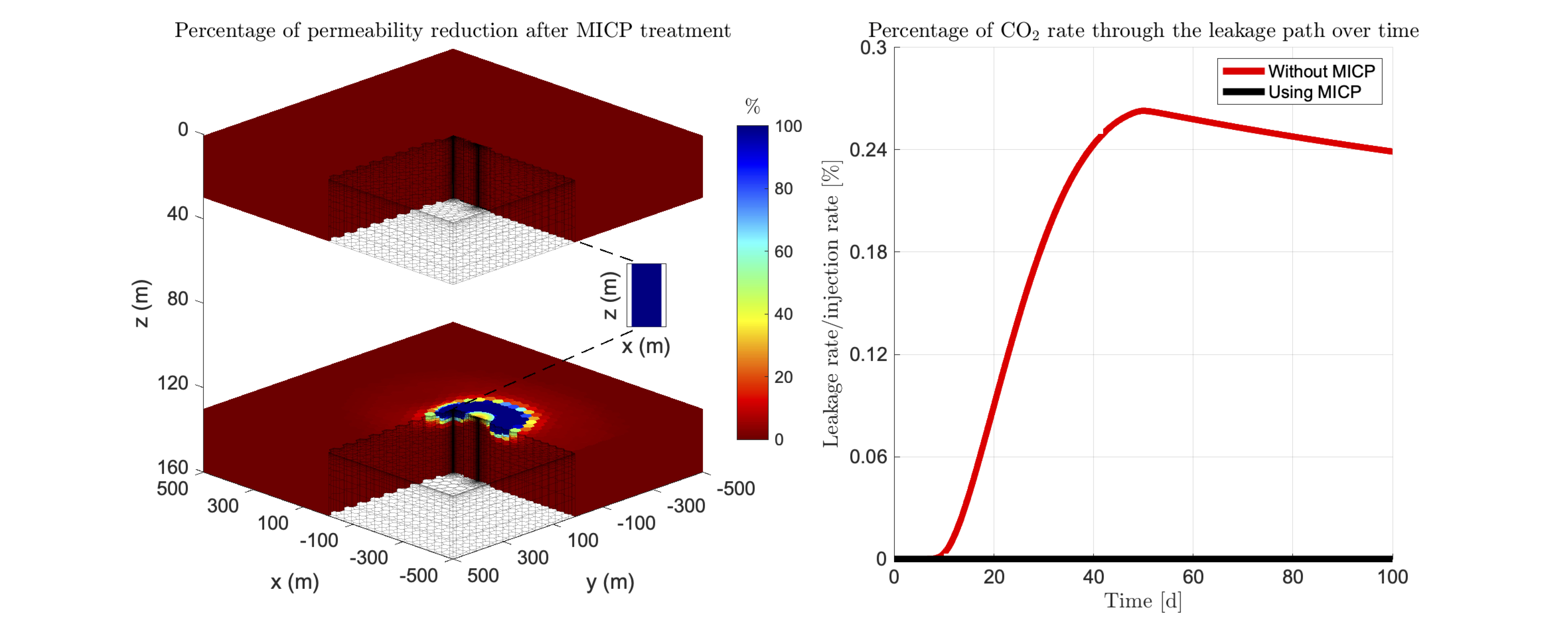Efficient models for Microbially Induced CAlcite Precipitation as a seal for CO2 storage (Project MICAP)

Storage of CO2 in North Sea formations can make a significant contribution to mitigate climate change if several gigatonnes per year are stored. The main trapping mechanism for CO2 sequestration is given by caprocks in reservoirs. Faults, fractures, and abandoned wells can create pathways for CO2 to migrate back to the surface. Therefore, it is mandatory to develop methods to ensure the long-term storage of CO2. A promising mechanism for leakage mitigation and remediation is to use biofilms to seal leakage paths via calcite precipitation. This new and sustainable technology is called ‘Microbially Induced Calcite Precipitation (MICP)’.
So far, laboratory measurements and simulation tools have mainly focused on the sub-meter scale. For field-scale application of this method, it is important to design an injection strategy of microbes and chemical components that facilitate sealing of leakage paths at the top of the formation while maintaining the possibility to inject CO2 in the rest of the formation. The complexity of current MICP models and present computer power limit the size of numerical simulations.
In this project we have developed a mathematical model for MICP suitable for field-scale studies. This model includes the following phenomena: attachment of the microbes to the pore walls to form biofilm, growing of biofilm by consumption of substrate, production of calcite by the biofilm, and permeability reduction as a result of calcite formation. The implementation of this model has been done in the ‘MATLAB Reservoir Simulation Tool (MRST)’, a free open-source software for reservoir modeling and simulation (https://www.sintef.no/projectweb/mrst/download/release-notes-for-mrst-2021b/).
Three conference papers, one academic paper, and a report to the Research Council of Norway have been produced in this project. Two of the conducted studies in this project are on diverse injection strategies to prevent and seal leakage paths and the optimization of control variables under uncertainty. Current work is the implementation of this mathematical model using the ‘Open Porous Media (OPM)’ initiative which in turn will allow to perform more computationally challenging simulations (https://opm-project.org).